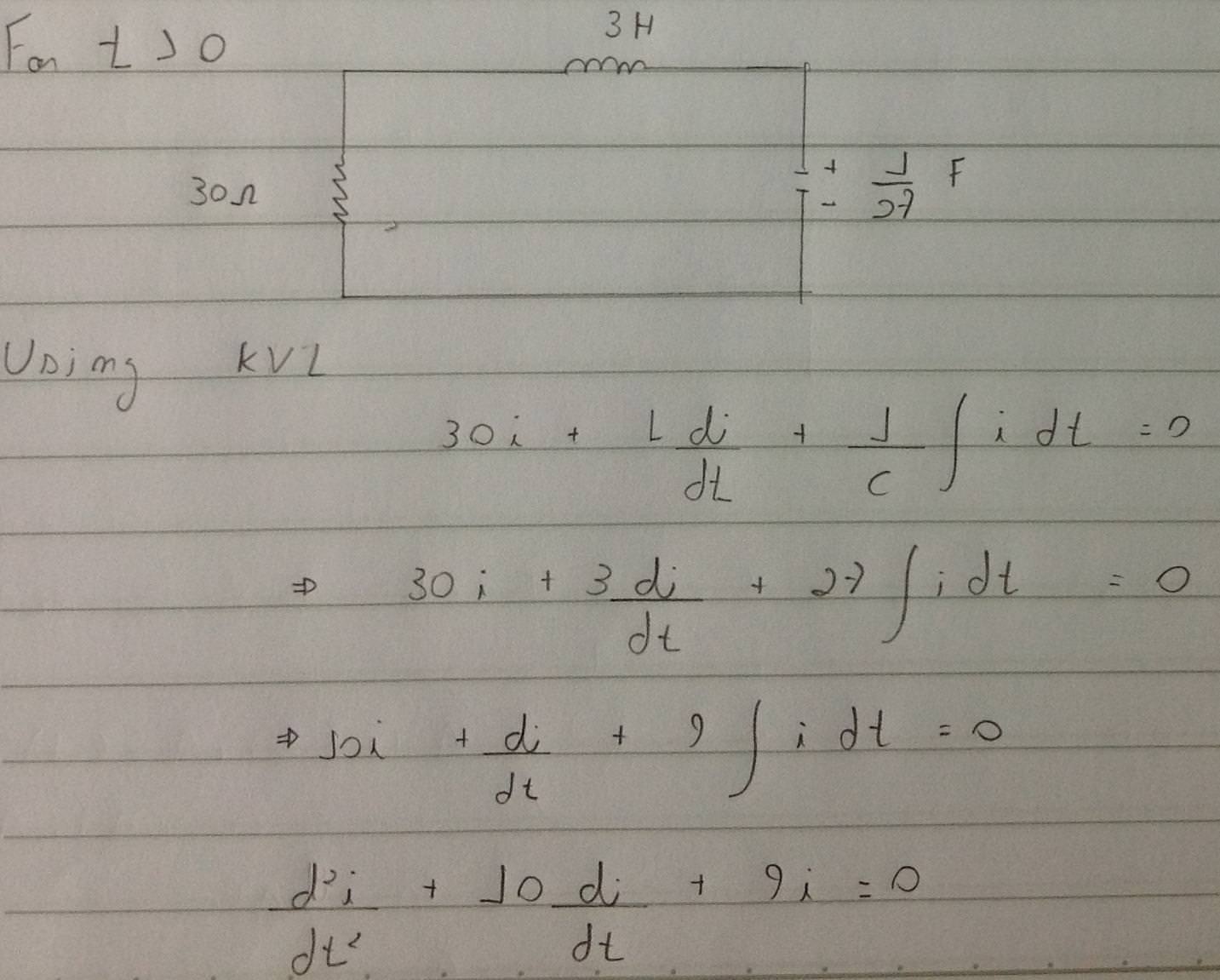I've got this circuit. It contains a switch that will open at T = 0:
I'm tasked with finding the voltage on the capacitor. I calculate the initial conditions (assuming that the capacitor and the inductor are fully charged). The initial C voltage is 16 V and the initial current through the inductor is 0 A.
Then I proceed to simplify the remaining components and I get to this circuit:

simulate this circuit – Schematic created using CircuitLab
Then I want to apply Kirchoff's Voltage Law. I get this equation:
And solving for the ODE (without the constants):
However, according to the solution manual, this equation describes the voltage in this circuit. How can that be? I can't understand the gap between having the ODE and its correlation to the voltage. Here is the solution:




